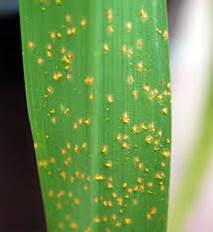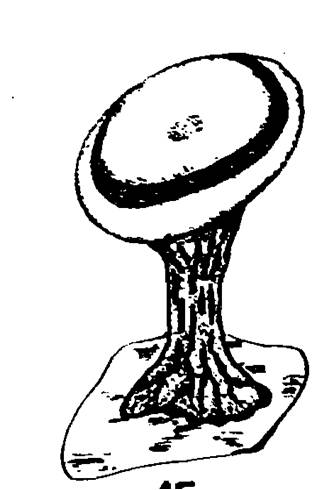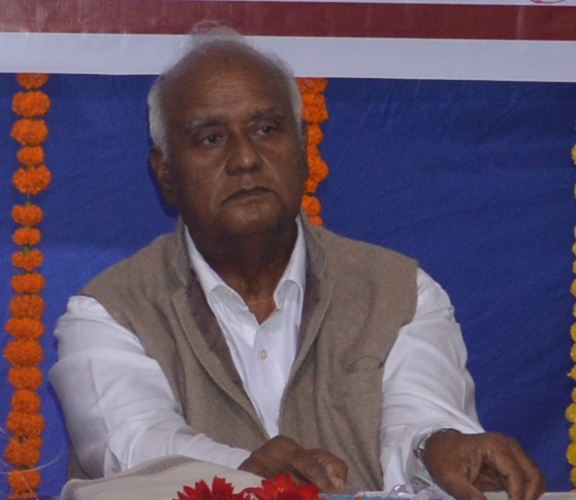 Rusts:
Rusts:
Rusts are plant diseases caused by pathogenic fungi of the order Pucciniales (previously also known as Uredinales). An estimated 168 rust genera and approximately 7000 species, more than half of which belong to the genus Puccinia, are currently accepted.[1] Rust fungi are highly specialized parasites with several unique features. A single species may produce up to five morphologically and cytologically distinct spore-producing structures viz., spermagonia, aecia, uredinia, telia, and basidia in successive stages of reproduction.
Unlike other plant pathogens, rust usually affects healthy and vigorously growing plants, so the infection is limited to plant parts, such as leaves, petioles, tender shoots, stem, fruits, etc.[1] Perennial systemic infection may cause deformities such as growth retardation, witches brooms, stem canker, hypertrophy of the affected tissues or formation of galls.Plants with severe rust infection may appear stunted, chlorotic (yellowed), or otherwise discoloured. Rust sporulates on affected plant parts.[1]
Rust is most commonly seen as coloured powder, composed of tiny aeciospores which land on vegetation producing pustules, or uredia, that form on the lower surfaces. During late spring or early summer, yellow orange or brown, hairlike or ligulate structures called telia grow on the leaves or emerge from bark of woody hosts such as Juniperus species. These telia produce teliospores which will germinate into aerial basidiospores, spreading and causing further infection.
 Spores -
Rusts can produce up to five spores types during their life cycle
• 0-Pycniospores (Spermatia)-Haploid gametes in heterothallic rusts.
• I-Aeciospores-non-repeating dikaryotic vegetative spores
• II-Urediniospores-repeating dikaryotic vegetative spores. These spores are referred to as the repeating stage because they can cause auto-infection (re-infect the same host from which the spores were borne). These spores are red/orange and are a characteristic sign of rust fungus infection.
• III-Teliospores-Diploid spores that produce basidia and are the survival stage of life cycle
• IV-Basidiospores-stem from basidia. Haploid spores which infect the alternate host.[2][3] although these are rarely observed outside of the laboratory.
Rust fungi can be categorized by how many types of spores are produced during the life cycle. Fungi that produce all five spores (sometimes excluding pycniospores) are termed macrocyclic. Fungi that lack pycniospores and aeciospores in their life cycle are termedmicrocyclic and always have an autoecious life cycle. Demicyclic fungi delete the uredial (repeating) stage from the life cycle. Understanding the life cycles of rust fungi allows for proper disease management.[4] (Wikipedia 2016)
Spores -
Rusts can produce up to five spores types during their life cycle
• 0-Pycniospores (Spermatia)-Haploid gametes in heterothallic rusts.
• I-Aeciospores-non-repeating dikaryotic vegetative spores
• II-Urediniospores-repeating dikaryotic vegetative spores. These spores are referred to as the repeating stage because they can cause auto-infection (re-infect the same host from which the spores were borne). These spores are red/orange and are a characteristic sign of rust fungus infection.
• III-Teliospores-Diploid spores that produce basidia and are the survival stage of life cycle
• IV-Basidiospores-stem from basidia. Haploid spores which infect the alternate host.[2][3] although these are rarely observed outside of the laboratory.
Rust fungi can be categorized by how many types of spores are produced during the life cycle. Fungi that produce all five spores (sometimes excluding pycniospores) are termed macrocyclic. Fungi that lack pycniospores and aeciospores in their life cycle are termedmicrocyclic and always have an autoecious life cycle. Demicyclic fungi delete the uredial (repeating) stage from the life cycle. Understanding the life cycles of rust fungi allows for proper disease management.[4] (Wikipedia 2016)
Life cycle -
All rusts are obligate parasites, meaning that they require a living host to complete their life cycle. They generally do not kill the host plant but can severely reduce growth and yield.[5] Cereal crops can be devastated in one season and trees that get infected in the main stem within their first five years by the rust Cronartium quercuum often die.[6]
Rust fungi can also be categorized by their life cycle. Three basic types of life cycles are recognized based on the number of spore states as macrocyclic, demicyclic, and microcyclic.[1] The macrocyclic life cycle has all spore states, the demicyclic lacks the uredinial state, and the microcyclic cycle lacks both the aecial and uredinial states, thus possess only spermagonia and telia. Spermagonia may be absent from each type but especially the microcyclic life cycle. In macrocyclic and demicyclic life cycles, the rust may be either host alternating (heteroecious), i.e., the aecial state is on one kind of plant but the telial state on a different and unrelated plant, or non-host alternating (autoecious), i.e., the aecial and telial states on the same kind of plant.[1]Heteroecious rust fungi require two unrelated hosts to complete their life cycle, with the primary host being infected by aeciospores and the alternate host being infected with basidiospores. This can be contrasted with an autoecious fungus which can complete its life cycle on a single host species.[2]
Dedicated to:
 |
|
|
|
|  |
|
|
|
| Dr. A. V. Sathe |
|
|
|
| Dr. Kotwal Sir |
|
|
|
About Database
The Indian Rust Fungal Database (IRFD) is a simple reference database.
Beinig a database of references, the structure of this relational database is very simple and easy to use.
Each record in the database has a unique identification number. For example, 'UID123' stands for 'Unique Identification number 123'. In addition to this identification number there is another identification number which uniquely identifies individual species. This number is called 'IMD' number. This number is useful since there can be more than one references to a single individual species. For example, there are two records for Abortiporus biennis. Thus this record has two UIDs, viz. UID99 and UID729. But the species has single unique IMD number IMD.
1. Search : Users can build simple as well as complex queries. The search results are alphabettically arranged according to generic and specific names. The IMD numbers are also given in the search results.
2. Browse : Database can be browsed by three hierarchical catagories viz. Family, Genus and Species. In addition to this, all records can also be browsed at a time. The number of sub entries are shown at each level of browsing.
Above two options allow the users to query the database in varied ways.
All information of a particular record can be viewed in a card viewer which opens in the same page by clicking on a name in the search/browse result.
The Indian Myxomycetous Database (IMD) has been linked to MycoBank.
Database Management System : MySQL 5.0
Server : Apache 2.2
Server side script : PHP
Cleint side script : javascript
All the web pages of this site are successfully tested on Mozilla Firefox 3.5.6.
(Get Mozilla Firefox)
Myxomycetous Photogallery
Work in progress!
Education
Work in progress!
DIV 4
|
| Introduction |
| About Database |
| Photogallery |
| Education |
Database statistics
| Number of Families | : | 25 | | Number of Genus | : | 93 | | Total number of Species | : | 221 | | Total number of records | : | 227 |
|

